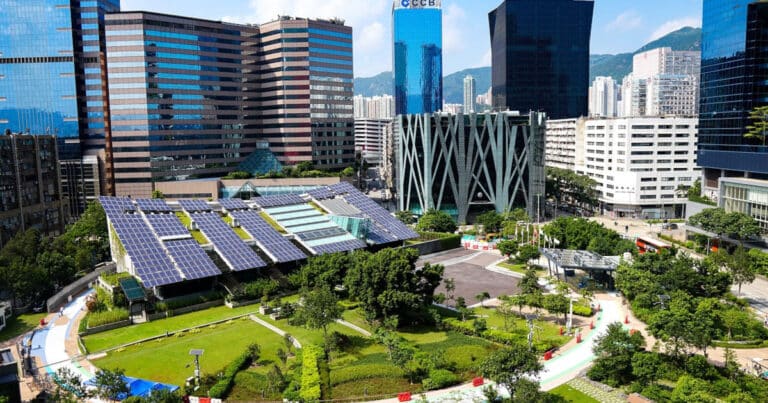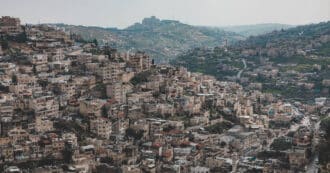By Sydney Cohen – Urban ecology is the study of all living organisms in an urban environment. It focuses on the relationship between ecosystems and the layout of an urban environment, aiming to understand how we can better achieve a balance between the natural environment and human behavior, in urban areas.
What is Urban Ecology?
The field aims to understand how human and ecological processes can coexist in human-dominated systems. Urban ecology has been described as a study of humans in cities, of nature in cities. It has been used variously to describe scientific relationships between humans and nature. This includes looking at how humans interact with natural systems, as well as how nature interacts with human systems in cities.
Urban Ecologists
Urban ecologists are typically interested in topics like biodiversity, ecological succession, ecosystem services, green infrastructure design, green space within cities, and climate change adaptation. They often study city planning, transportation, architecture, public health issues such as air pollution and water quality as well as food security including local farming practices that exist in cities.
Urban Ecology has a unique focus on humans and natural systems. Each research area, in University, contributes to our understanding of urban ecosystems and each must be understood to fully grasp the science of Urban Ecology.
Urban Ecology is a science that can help societies with their efforts to become more sustainable.
Why is Studying Urban Ecology So Important?
Urban ecologists often have to consider how they can help make an urban environment better for its human inhabitants while still maintaining green space and healthy ecosystems overall. It is important to study because cities are becoming increasingly more common, so it is vital that we understand what effects they have on our natural environment.
Urban Ecology for 60% of the World Population
By 2030, more than 2 billion people will live in cities – that is 60 percent of the world’s population. In addition to space in which to live, all of these people will need breathable air, drinkable water, and food. The entire planet is becoming more urbanized, a phenomenon that is already having a profound effect on the environment itself.
But large areas of green spaces exist within cities; they filter pollution and produce oxygen, and provide habitat for songbirds and other wildlife. Understanding the interactions of the living and nonliving components of these urban ecosystems is vital to the future of all life on earth, including ourselves.
Urban ecology is a particularly important field of study, given the rise in fossil fuel emissions that are contributing to climate change. Much of the emissions that poison our air and cause drastic environmental changes, come out of city areas.
This is why we must find ways to make our urban areas more livable and environmentally friendly, for both wildlife species and humans.
Urban Ecology Creates Green Spaces
Creating green spaces in urban environments has had incredibly beneficial effects on human health in the populations that utilize these spaces. It has been found that “valuing nature and biodiversity exercises have begun to strengthen the case for investment in nature-based solution, prescribing nature walks and open space exercise, improving access to urban greenspaces and restoring derelict land,” demonstrating the success of urban ecology in expanding urban ecosystems.
Communities Benefit from Urban Ecology
Having a habitat within a city improves ecological processes, providing a home for plant and animal life. Simultaneously, humans reap these benefits as well, by being provided with a space within the city, where they can access nature. Research has shown that the quality of life in humans is significantly higher when they have access to nature in their everyday life.
Urban Ecosystems
Urban ecosystems are not only about the plants and animals that live in urban environments, but also the social interactions of people. The way that cities are built can have a huge effect on animal habitats, as well as human health. What we do to our urban areas will determine how healthy they are and what kind of lives future generations will have.
While urban ecology studies the ecology of ecosystems in an urban context, it is important to understand the influence that cities and land use have on these habitats. Oftentimes, the way cities are designed affects the diversity of species that are found in urban habitats.
It is no mystery that cities are busy, with many people and businesses constantly moving about. You can imagine the impact this has on the abundance of species in cities.
Urban Population Density
Population density plays a huge role in the diversity of species in urban environments. Research in 2019 for the Landscape and Urban Planning issue, indicated that while cities can harbor rich diversity in their species, it is important to create a variety of ecosystems within the city, man-made and natural.
Creating these spaces, in addition to preserving those that naturally exist, is one way that we can preserve the ecological diversity in our cities.
Ecology in Urban Areas
Urbanization in developing countries is driven by economic benefits while developed countries can focus on efficiency reducing the impact of urban growth on the ecosystem. While urbanization has many detrimental effects on the ecosystem, it has also led to innovations aimed at reducing these effects such as water harvesting systems, energy-efficient homes, landscape planning, sustainable commuting, and green space accessibility.
Society is losing its appreciation for ecosystem services, thereby diminishing resilience in terms of mitigating problems such as air quality deterioration, restricted living space, urban heat island effect, urban health, groundwater scarcity, loss of water bodies, and so on.
Urban Ecology and the Roles of Urban Agriculture
Urban Agriculture is considered to be valuable within cities. It is also important in the creation of green spaces, grasslands, green spaces, and wildlife. The roles of urban agriculture can also vary substantially between different areas.
It’s important to maintain water resources, maintain lakes and rivers, protect the environment and promote the health and sustainability of urban landscapes. We have to recognize that living organisms are not all alike in an urban environment, and their presence can vary substantially.
Urban Ecology Success Stories
Kirsten is one of the Environmental Educators at the Urban Ecology Center. She talks about her “Equity, Dignity, and Justice” committee which “is dedicated to learning about oppression alongside our fellow staff at the UEC. As a Land Steward, I garden for wildlife. I do my best to keep wildlife out of the garden. Then I consider what plants I can add to the land for the benefit of wildlife. As a gardener, I enjoy pondering what food I can grow for myself and my family.”
Kirsten is a great example of the way we can take steps in our everyday lives to make our urban environments more eco-friendly.
Local Governments Increase Urban Ecology Development
Additionally, there has been a rise in local government efforts to increase the management of ecology and biodiversity in urban communities. For example, The Noe Valley Community Benefits District in San Francisco was created by the San Francisco Green Business Team. It includes Urban Ecology, the Department of Public Health, and the San Francisco Department of the Environment.
A thriving population of homegrown neighborhood artists has emerged in Oakland, California, encouraging community participation in the arts through after-school training programs and events for young adults, street banners, and murals.
A successful urban ecosystem has biodiversity, and humans experience the benefits of urban ecosystems by having access to nature.
Urban Ecology is our Future
Hopefully, this article has expanded your knowledge on the importance of having successful and healthy habitats in our cities and towns. In this way we can have a more prosperous future with less environmental destruction, and we can work together to keep a diversity of species, even in our cities.
* Featured image source








